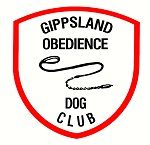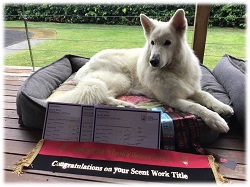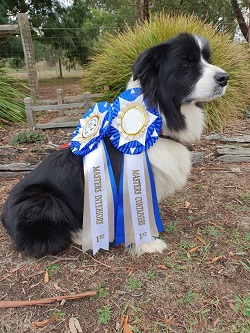|
|
Training Important InformationStandard Requirements
Training TimesClasses are being held on Saturday mornings.
Refer to Club Calendar for dates. Obedience
This training is about basic behaviors such as sit, stay, drop, and walking to heel. All new members will be put through the Introductory class on their first day. This shows them basic training methods and teaches them the rules of the club. Depending on the age of your puppy/dog, they will then move onto either the Puppies class (for puppies under 6 months of age) or the Beginners 1 class (for puppies/dogs 6 months and over). We have four classes beyond the Beginners class, each being more advanced than the next. If you are just wanting to teach you dogs some basic obedience or you want to continue on to trial in competitive obedience, we can cater to your needs. You will need to bring your dog, on a lead and some small treats for training if you wish. You can train your dog on which ever sort of collar you prefer, or a check chain. The club has an assortment of these, as well as leads for sale in the clubrooms. Graduation DaysThe club holds four Graduation Days during the year, which are held in a trial-like situation. These give you the opportunity to pass up into the next class. Refer to Club Calendar or Upcoming Trials/Events for graduation dates. Scent Sports and Disciplines
These are activities that put a dog's love of sniffing to the test. TrackingThis requires your dog to track a tracklayer's scent over set distances and find articles (socks) left on the route. Initially the tracklayer will be known to your dog, but in later tests, the tracklayer will be unknown to them. Track and SearchThis requires your dog to follow a tracklayer's path in suburbia. Initial tests are similar to Tracking, but the articles used come in various forms (e.g. toy, keys, mobile phone). Later levels do not use articles, but the path must still be followed. At the highest levels tracking takes place at night and the tracklayer can be picked up and driven for up to 300m! Scent WorkThis is similar to working as a sniffer dog, but your dog is required to locate the odours of birch, anise, clove or cypress. Search areas include boxes, indoors, outdoors, and vehicles. In early tests there is one odour per element. At higher levels there will be more odours and dog food may be used as a diversion! |


